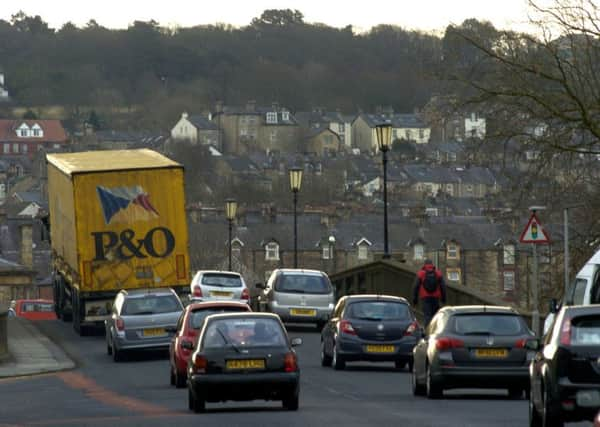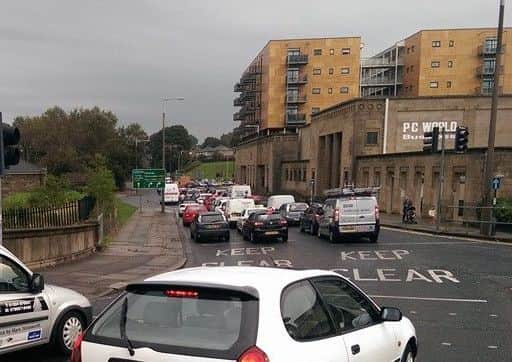Major new transport plan agreed for Lancaster district


The District of Lancaster Highways and Transport Masterplan outlines a range of improvements to be developed by 2031, including a vision for a city centre less dominated by traffic, with more people using sustainable transport such as buses and cycling.
Travel throughout the wider district will also be easier, and the plan contains proposals for a ‘Lancaster Reach’ bus rapid transit network, providing better connections between the city centre, and Morecambe, Heysham, the universities and the new Park and Ride site at M6 Junction 34, which is being delivered as part of the Bay Gateway.
Advertisement
Hide AdAdvertisement
Hide AdConsultation on a draft version of the masterplan took place in 2015, and the final document reflects the development of those initial proposals with the benefit of feedback received from many local organisations and members of the public.


Agreement of the Lancaster document marks the completion of a set of five plans covering all 12 districts of Lancashire and, where necessary, neighbouring areas, which are already being used to make the case for multi-million pound investments in the transport infrastructure needed to support future housing and business development.
The masterplans set out options for major changes to highways, public transport and walking and cycling facilities to create conditions for economic growth and prepare for predicted increases in traffic.
They identify opportunities to attract external funding for improvements from housing and business developers or the government through ‘growth deals’ which combine public and private funding.
Advertisement
Hide AdAdvertisement
Hide AdThe completion of the Bay Gateway will fundamentally change traffic patterns in Lancaster district and present major opportunities to transform travel that are captured in the masterplan. Central to the vision of how Lancaster could look by 2031 are proposals to:


• Position Caton Road as the main gateway into the city from the M6, from both north and south. This will allow us to manage the city centre network more closely once the Bay Gateway opens, with a focus on improving the environment by identifying options to support public transport, cycling and walking and limit unnecessary HGV movements.
• Reconfigure M6 Junction 33 to support the development of South Lancaster around Lancaster University. In a change to the draft masterplan, it is now proposed to relocate part of the junction further to the north so that people travelling from south Lancaster can access the motorway without having to travel through the city centre or Galgate. The south-facing slip roads would remain where they are so that traffic accessing the M6 south would not need to pass through Galgate.
• Develop the ‘Lancaster Reach’ bus rapid transit network, incorporating the Park and Ride service from M6 Junction 34 to Lancaster city centre to create a ‘Y’-shaped network of two routes, one linking Heysham and Morecambe to South Lancaster via the city centre, the other linking M6 Junction 34 to Lancaster University. This is linked into a wider route management plan for the A6 corridor between the A6 and South Lancaster, to create a sustainable transport corridor, supporting alternatives to the car for local journeys to reduce congestion and support development in the area.
Advertisement
Hide AdAdvertisement
Hide Ad• Work with Lancaster City Council to put in place the transport elements needed to make the Morecambe Area Action Plan a reality. A range of measures would aim to improve gateways into the town centre and fully integrate the seafront with the town to make it more attractive to spend time in a Morecambe less dominated by cars.
• Carry out a Morecambe Bay Connectivity Study to explore the business case for better connections around the whole bay area for all modes of transport. This will also take into account journeys to Cumbria, particularly from Carnforth, to benefit from economic growth potential at the Sellafield and GlaxoSmithKline sites.
• Improve how Carnforth town centre works, making it a more attractive place for visitors to spend time, and more user-friendly for pedestrians and cyclists.
• Look at long-term sustainable alternatives to conventional public transport for rural areas, and whether solutions from elsewhere in the UK could be applied to Lancaster.
Advertisement
Hide AdAdvertisement
Hide Ad• A comprehensive plan to develop an integrated multi-use/cycling network for the district, which will support the wider Cycling and Walking Strategy for Lancashire.
• Make Lancaster central to a countywide programme of support for Ultra Low Emission Vehicles.
County Councillor John Fillis, Lancashire County Council cabinet member for highways and transport, said: “Good transport links are key to economic development, and improving our current infrastructure is fundamental to ensure businesses will invest in our area.
“For Lancaster this presents an opportunity to tackle some of the longstanding problems with congestion and air pollution to ensure the area is prosperous and an even better place to live in the future.
Advertisement
Hide AdAdvertisement
Hide Ad“People in Lancaster have already shown their willingness to embrace sustainable transport, with cycling being well supported in the area, and these proposals look to build on this, with attractive cycle routes and frequent rapid transit buses being central for journeys to areas where new development is planned.
“What has been a substantial issue for the district will be solved by the Heysham to M6 Link, ‘The Bay Gateway’. This is the lever to unlock fundamental change across the district, and one of our key tasks will be to make the most of these changes to traffic patterns once the road opens.
“We also want to make Morecambe a place less dominated by cars, and realise opportunities to provide an enhanced environment which supports better connectivity to neighbouring areas.
“We will also carry out a study to look at the business case to improve wider connections, including to Cumbria, which may present a real opportunity for the economy in both counties.
Advertisement
Hide AdAdvertisement
Hide Ad“At its heart, the transport vision presented in this Masterplan sets out to support Lancaster as an exemplar of how a ’green’ district can also be an outstanding and sustainable success in attracting and supporting growth and development.”
You can see the Highways and Transport Masterplan for Lancaster at www.lancashire.gov.uk – search for ‘transport masterplan’.